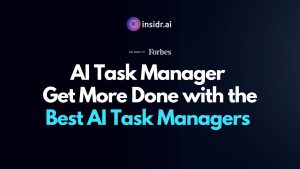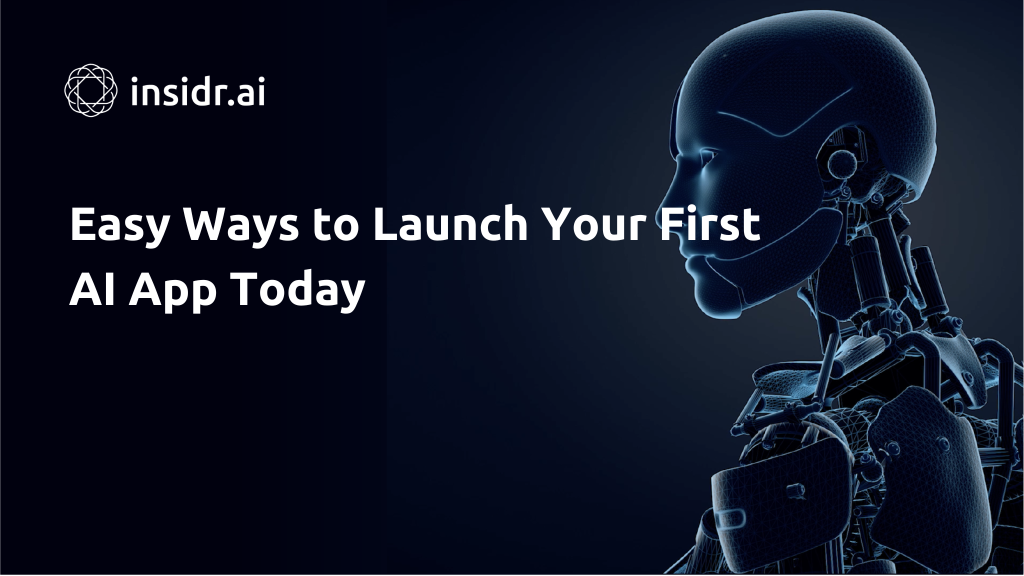
Are you eager to create and deploy your very first AI-powered app using GPT-3 or other large language models?
In this comprehensive guide, we’ll walk you through four simple methods that will take you from ideation to prototype to hosting your AI app on a website.
Best of all, you don’t need to be a tech guru to follow along; we’ve made it easy for those without a technical background to bring their ideas to life.
Building and Launching an AI Application
Bringing your AI app idea to life can be an exciting and fulfilling journey.
Whether you have a groundbreaking concept or just a spark of creativity, we’ve got you covered.
In this guide, we will cover the entire process from creating an API endpoint to connecting the front end, making it accessible for users.
What is an AI App?
Artificial Intelligence (AI) applications, often referred to as AI apps, are software programs that leverage machine learning, natural language processing, and other AI techniques to perform tasks that typically require human intelligence.
These applications have revolutionized various industries by automating complex processes, enhancing user experiences, and providing valuable insights from vast amounts of data.
AI apps can take on diverse forms, from chatbots and virtual assistants to recommendation systems, image recognition tools, and more.
What sets them apart is their ability to adapt and improve their performance over time, learning from data and user interactions.
These applications are not limited to a single domain; they have permeated various sectors, including healthcare, finance, e-commerce, and entertainment, to name just a few.
As a result, they have opened up new avenues for innovation, offering businesses and individuals the opportunity to enhance productivity, make data-driven decisions, and create more engaging user experiences.
In the following sections, we’ll explore the possibilities and potential use cases of AI apps, highlighting their versatility and impact on different aspects of our lives.
Method 1: EveryPrompt.com
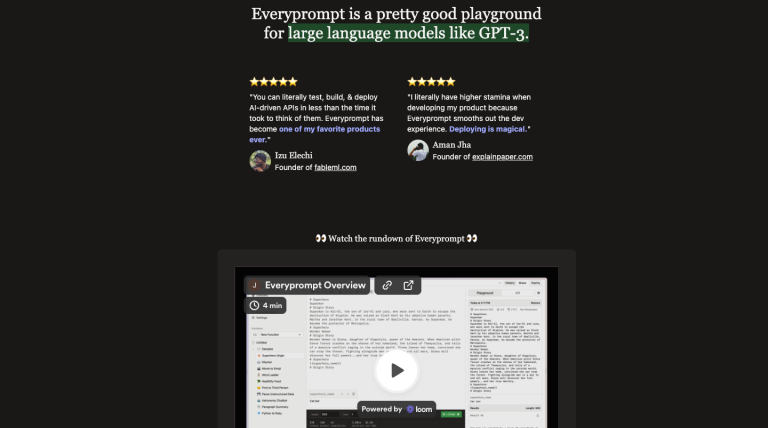
EveryPrompt.com is your gateway to kickstarting your AI app development journey.
It offers an improved version of the OpenAI playground, boasting a user-friendly interface and powerful features that are essential for AI app development.
- Model Selection: Choose from a variety of models suitable for your project.
- Prompt Customization: Craft prompts tailored to your application’s needs.
- Dynamic Prompts: Insert dynamic values into your prompts for later use.
- One-Click Deployment: Easily deploy your prompts for programmatic interaction via a website.
With EveryPrompt, you can swiftly turn your ideas into prototypes and host them, all with a single click.
👉ChatGPT: Full guide for beginners
Method 2: Promptable.ai

Promptable.ai is another valuable tool that simplifies AI app development.
Similar to EveryPrompt, it offers a user-friendly environment for creating and testing prompts.
However, it excels in prompt testing with its unique “Evaluate” tab.
- Evaluate Prompts: Test multiple variables and see their outputs simultaneously.
- Streamlined Testing: Efficiently refine your prompts for better AI responses.
- Easy Deployment: Seamlessly deploy your applications with a few clicks.
Promptable.ai is a fantastic choice for iterative prompt development and testing, ensuring your AI app provides the best possible user experience.
Method 3: Steamship
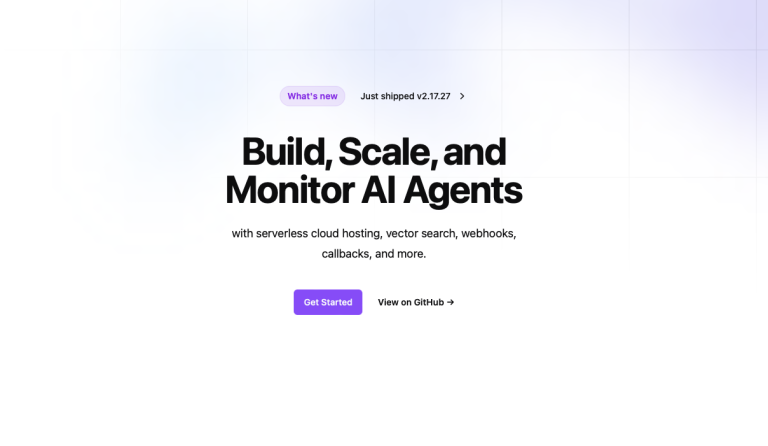
Steamship is your go-to platform for creating and hosting AI applications with a focus on language models.
Unlike the previous tools, Steamship allows you to build more complex applications by combining prompt-based APIs and Lang Chain apps.
- Managed Backend: Easily create and host AI applications with managed backend services.
- Lang Chain Apps: Dive into advanced AI app development with Lang Chain.
- Versatile Deployment: Host and interact with your AI applications programmatically.
Steamship empowers you to create AI apps that go beyond simple prompts, making it suitable for a wide range of projects.
Method 4: Berri AI (Litellm.ai)
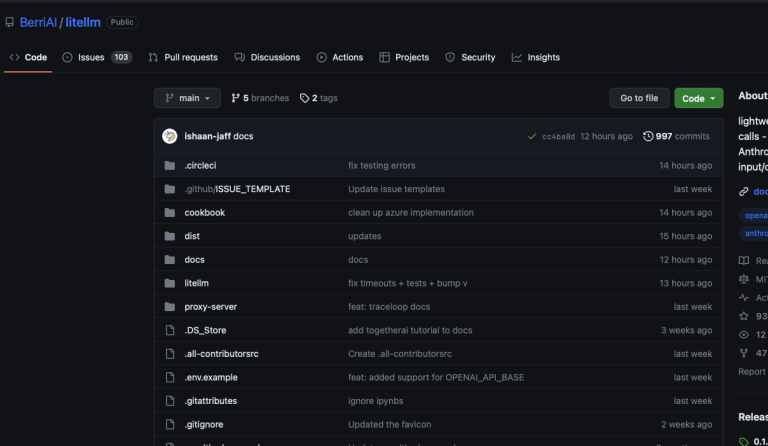
Berri AI (litellm.ai)is a powerful platform that streamlines AI app deployment.
It offers one-click deployment for large language model apps and enables you to create chatbot interfaces effortlessly.
- Effortless Deployment: Deploy AI apps with a single click.
- Documentation Integration: Train your chatbot using external documentation.
- Lang Chain Integration: Harness the power of Lang Chain for complex AI applications.
Berry AI (litellm.ai) simplifies the process of creating AI chatbots and can be used for various applications, from customer support to data retrieval.
Connecting Your AI App to the Front End
Now that you’ve created your AI app using one of the methods mentioned above, it’s time to connect it to the front end.
This step is crucial to make your AI application accessible to users. One of the easiest ways to do this is by using a platform like Bubble.io.
- Create an App: Start by creating an app in Bubble.io.
- Design the User Interface: Design the interface for your AI app, including input fields and output displays.
- Set Up API Integration: Use the API connector to connect your AI app to the front end.
- Create Interactions: Set up interactions that trigger AI requests when users input information.
- Display Responses: Display AI-generated responses on your website.
By following these steps, you can seamlessly integrate your AI app with the front end, allowing users to interact with it as if it were a regular website or application.
The Possibilities of AI Apps

The potential of AI apps is boundless, and their impact extends far beyond what was previously imaginable.
Here are some of the remarkable possibilities and applications of AI apps:
- Healthcare Advancements: AI apps are revolutionizing healthcare by diagnosing diseases, predicting patient outcomes, and personalizing treatment plans. For instance, AI-powered medical imaging systems can detect anomalies in X-rays and MRIs with high accuracy, aiding healthcare professionals in making faster and more accurate diagnoses.
- Enhanced Customer Service: Chatbots and virtual assistants are reshaping customer service across industries. They provide instant support, answer queries, and even facilitate transactions, enhancing customer satisfaction and reducing response times.
- Content Recommendations: Entertainment platforms like Netflix and Spotify use AI apps to analyze user preferences and provide personalized content recommendations. This not only keeps users engaged but also increases customer retention.
- Autonomous Vehicles: AI apps are at the core of self-driving cars, enabling them to navigate, make split-second decisions, and ensure passenger safety. This technology promises to revolutionize transportation and reduce accidents caused by human error.
- Language Translation: AI-powered translation apps and tools are breaking down language barriers, allowing people from different parts of the world to communicate effectively. These apps are particularly valuable for travelers, businesses, and global collaborations.
- Financial Services: AI apps are optimizing financial services by automating fraud detection, portfolio management, and even providing personalized financial advice. They help individuals and businesses make informed financial decisions.
- Environmental Impact: AI apps are being used to monitor and combat environmental challenges. They analyze data from sensors and satellites to track deforestation, predict natural disasters, and optimize energy consumption.
- Education and Learning: AI-powered educational apps offer personalized learning experiences. They adapt to individual learning styles, provide real-time feedback, and enhance the effectiveness of online education.
- Creative Assistance: AI apps can assist artists, writers, and designers by generating ideas, suggesting improvements, and automating repetitive tasks, freeing up more time for creativity.
In conclusion, AI apps have the potential to transform nearly every aspect of our lives, driving innovation, efficiency, and improved decision-making.
As technology continues to advance, we can expect to see even more remarkable developments in the world of AI apps, opening up new possibilities and reshaping industries in the years to come.
Conclusion
Launching your first AI app doesn’t have to be a daunting task. With the right tools and a clear step-by-step guide, you can turn your AI app idea into a reality.
Whether you choose EveryPrompt.com, Promptable.ai, Steamship, or Berry AI, the key is to start small and gradually expand your project as you become more comfortable with AI app development.
Remember, the world of AI app development is constantly evolving, and there are countless possibilities waiting to be explored. So, don’t hesitate to dive in, experiment, and bring your unique AI app to life.
With these four methods and the guidance provided here, you’re well-equipped to take the first steps towards creating your AI-powered application.
Discover More AI Tools
Every week, we introduce new AI tools and discuss news about artificial intelligence.
To discover new AI tools and stay up to date with newest tools available, click the button.
To subscribe to the newsletter and receive updates on AI, as well as a full list of 300+ AI tools, click here.




